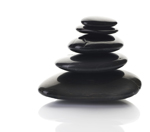-
Parks Klinge posted an update 3 days, 20 hours ago
Background Our aim was to describe patterns of sitting over time and determine the sociodemographic predictors of sitting over time among women living in socioeconomically disadvantaged neighbourhoods. Methods Women age between 18 and 45 years (mean = 34.4 ±8.1, n = 4349) reported their sitting time, sociodemographic (e.g., age), and health (e.g., body mass index) three times over 5 years. Linear mixed modelling was used to determine the predictors of change in sitting over time, adjusting for covariates. Results Mean baseline sitting time was 40.9 h/week, decreasing to 40.1 h/week over five years. Greater sitting time was reported in participants ≤25 years of age, living with obesity, living in urban areas, self-reported poor/fair health, working full-time, with higher education, never married and with no children. Annually, the average sitting time decreased by 0.4 h/week (95% CI; -0.7 to -0.05) in women working full-time but increased by 0.1 h/week (95% CI; -0.2 to 0.6) who were not working. Similarly, annual sitting time decreased by 0.6 h/week (95% CI; -0.2 to 1.3) in women with no children but increased by 0.4 h/week (95% CI; -0.2 to 0.5) and 0.9 h/week (95% CI; 0.3 to 1.3) among those with two and three/more children, respectively. Conclusion Among disadvantaged women, those not working and with two or more children may be at particular risk for increased sitting time and warrant further attention.A lot of nanomaterials are using T1-T2 dual mode magnetic resonance (MR) contrast agents (CAs), but multilayer nanowire (NW) with iron (Fe) and manganese (Mn) as T1-T2 dual modal CAs has not been reported yet. Herein, we synthesized a Fe/Mn multilayer NW with an adjustable Fe layer, as T1-T2 dual-mode CAs. The relaxation performance of Fe/Mn multilayer NW was studied at 1.5 T. Results show that, when the length of the Fe layer is about 10 nm and the Mn is about 5 nm, the r1 value (21.8 mM-1s-1) and r2 value (74.8 mM-1s-1) of the Fe/Mn multilayer NW are higher than that of Mn NW (3.7 mM-1s-1) and Fe NW (59.3 mM-1s-1), respectively. We predict that our Fe/Mn multilayer NW could be used as T1-T2 dual mode MRI CAs in the near future.The objective is to develop a multivariable risk model for the non-invasive detection of prostate cancer prior to biopsy by integrating information from clinically available parameters, Engrailed-2 (EN2) whole-urine protein levels and data from urinary cell-free RNA. Post-digital-rectal examination urine samples collected as part of the Movember Global Action Plan 1 study which has been analysed for both cell-free-RNA and EN2 protein levels were chosen to be integrated with clinical parameters (n = 207). A previously described robust feature selection framework incorporating bootstrap resampling and permutation was applied to the data to generate an optimal feature set for use in Random Forest models for prediction. The fully integrated model was named ExoGrail, and the out-of-bag predictions were used to evaluate the diagnostic potential of the risk model. ExoGrail risk (range 0-1) was able to determine the outcome of an initial trans-rectal ultrasound guided (TRUS) biopsy more accurately than clinical standards of care, predicting the presence of any cancer with an area under the receiver operator curve (AUC) = 0.89 (95% confidence interval(CI) 0.85-0.94), and discriminating more aggressive Gleason ≥ 3 + 4 disease returning an AUC = 0.84 (95% CI 0.78-0.89). The likelihood of more aggressive disease being detected significantly increased as ExoGrail risk score increased (Odds Ratio (OR) = 2.21 per 0.1 ExoGrail increase, 95% CI 1.91-2.59). Decision curve analysis of the net benefit of ExoGrail showed the potential to reduce the numbers of unnecessary biopsies by 35% when compared to current standards of care. Integration of information from multiple, non-invasive biomarker sources has the potential to greatly improve how patients with a clinical suspicion of prostate cancer are risk-assessed prior to an invasive biopsy.Polysaccharide-based materials created by physical processes have received considerable attention for biomedical applications. These structures are often made by associating charged polyelectrolytes in aqueous solutions, avoiding toxic chemistries (crosslinking agents). We review the principal polysaccharides (glycosaminoglycans, marine polysaccharides, and derivatives) containing ionizable groups in their structures and cellulose (neutral polysaccharide). EHop-016 Physical materials with high stability in aqueous media can be developed depending on the selected strategy. We review strategies, including coacervation, ionotropic gelation, electrospinning, layer-by-layer coating, gelation of polymer blends, solvent evaporation, and freezing-thawing methods, that create polysaccharide-based assemblies via in situ (one-step) methods for biomedical applications. We focus on materials used for growth factor (GFs) delivery, scaffolds, antimicrobial coatings, and wound dressings.This study aimed to compare the between-session reliability of different performance variables during 2 variants of the Smith machine back-squat exercise. Twenty-six male wrestlers performed 5 testing sessions (a 1-repetition maximum [1RM] session, and 4 experimental sessions [2 with the pause and 2 with the rebound technique]). Each experimental session consisted of performing 3 repetitions against 5 loads (45-55-65-75-85% of the 1RM). Mean velocity (MV), mean power (MP), peak velocity (PV), and peak power (PP) variables were recorded by a linear position transducer (GymAware PowerTool). The best and average scores of the 3 repetitions were considered for statistical analyses. The coefficient of variation (CV) ranged from 3.89% (best PV score at 55% 1 RM using the pause technique) to 10.29% (average PP score at 85% 1 RM using the rebound technique). PP showed a lower reliability than MV, MP, and PV (CVratio ≥ 1.26). The reliability was comparable between the exercise techniques (CVratio = 1.08) and between the best and average scores (CVratio = 1.04). These results discourage the use of PP to assess back-squat performance at submaximal loads. The remaining variables (MV, MP, or PV), exercise techniques (pause or rebound), and repetition criteria (best score or average score) can be indistinctly used due to their acceptable and comparable reliability.

